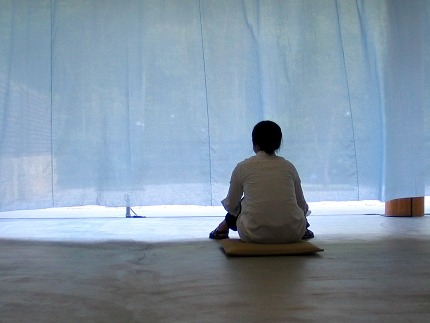
I have always believed that God shows up in our daily lives, not just through Scripture or attending church, and that God uses our daily experiences to help us grow as Christians and as people. However, in college I remember having an experience and then thinking “Oh, someone did not see that situation the way that I saw it. Maybe the way that I saw it (gasp) wasn’t the whole story.” My perspective, filters, beliefs, & feelings limited what I was able to understand from that experience even though I wasn’t aware that anything was affecting me. This moment was the beginning of a very slow awakening to the fact that I have a whole inner landscape which is affecting me all of the time and I really don’t have any idea what that landscape looks like. If I don’t know what that inner landscape looks like, how can I find out what God wants to teach me through my experiences?
In The Human Condition; Contemplation and Transformation Fr. Thomas Keating describes three programs for happiness which are part of our inner landscape. These programs relate to what Paul calls “the old man,” also called “the false self” or the “non-essential self.” The programs are:
the need for security and survival
the need for affection and esteem
the need for power and control
These programs for happiness are unconscious and hidden so deep in our make up that we often don’t see how they drive our actions. Sometimes the better our actions seem to be – helping people, being involved in church or in peace and justice work, working at Word Made Flesh – the more one of these three programs may be secretly running the show. Fr. Richard Rohr said that many times good deeds just become “a more heroic disguise” for our false self. Paul says “Don’t think you are better than you really are. Be honest in your evaluation of yourselves, measuring yourselves by the faith God has given us…” (Romans 12:2 NLT) In living out this command to have an honest evaluation of self, we have to look at everything, not just our actions but our internal motivations as well. The question becomes not just “What good things have I done?” but “When am I being run by one of my programs instead of by the fruits of the Spirit- love, joy, peace, et. al?”
I believe that God wants us to be free to love and serve each other from the Holy Spirit which lives inside of us instead of acting out of our programs. But, how do we know when one of these programs is involved in what we are doing? One way we can see our programs in action is when one of these programs is frustrated. Usually that means someone or something threatens our power & control, doesn’t offer us affection or esteem, or in some way makes us feel unsafe and insecure. When this happens we experience so-called ‘negative’ emotions such as shame, anger, humiliation, grief, sorrow, discouragement, fear. These emotions are a signal that something has frustrated our program for happiness. Our habitual response is to send that negative emotion outward- “She did this to me!” or maybe we internalize it “I’m a bad person.” or possibly we avoid it “I’m not upset, I’m just trying to GET THINGS DONE around here.” It seems like we have many creative ways to avoid recognizing the emotions connected to our programs, I know I sure do!
One practice I learned this summer to recognize my programs for happiness and let go of them before acting out of those programs has been really helpful for me. When I feel an emotional trigger (for me this generally looks like some kind of intense rush of energy directed at fixing something), I try to find time at some point during the day to be alone and work through the experience. Then I more or less follow the process below; which has been named different things by different people. I’ve heard it called “The Welcoming Prayer” or “Going in and down” or just “Inner Awareness Practice.”
1. Get centered.
Take a few deep breaths and relax the tension in my body. Welcome the emotion. I allow the situation to resurface and begin to notice what I feel in my mind, my heart, and my body when I think of the situation. I don’t try to judge or control any ‘bad’ feelings like anger, embarrassment, I just let those come and welcome them. I am kind to myself and my feelings.
2. Drop the other, focus on myself.
I let whatever happened drop, either by explaining it to Jesus, or just by focusing on what I’m feeling and experiencing. I stop trying to come up with solutions and strategies or blame for the situation, instead observing what is going on for me and learning from that.
3. Release the program.
I pray to release the program. Keating recommends saying “I now release my need for power and control, I now release my need for affection and esteem, I now release my need for security and survival.”
4. Practice gratitude.
Ultimately, whether at this point, or at a later time, I’m usually able to say thank you to God and be thankful to the situation which caused me discomfort because the experience gave me greater awareness and freedom.
The practice of recognizing and letting go of my programs for happiness has brought so much freedom into my life. I hope that by sharing with you in this letter you may also know greater self-awareness and freedom to love and serve others.
